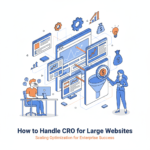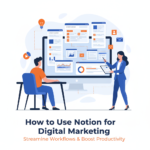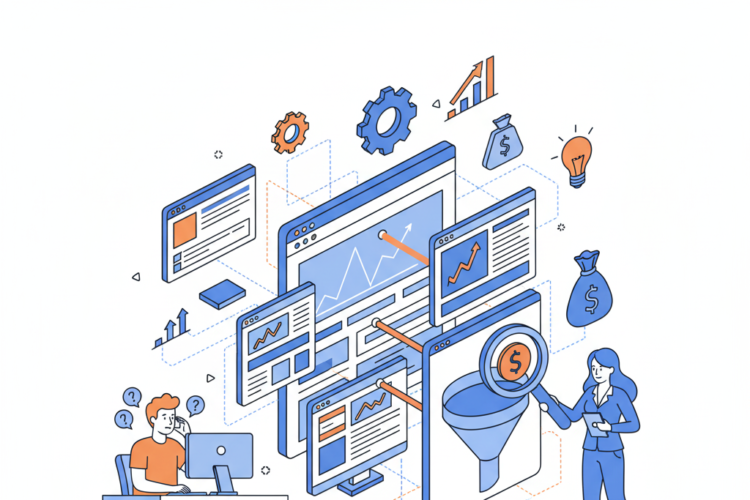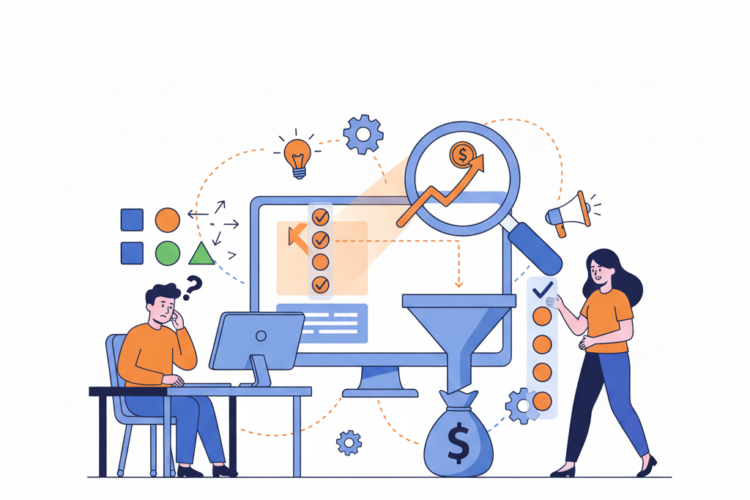
🧠 CRO and Behavioral Economics: Turning Psychology into Conversions
In the digital marketing world, Conversion Rate Optimization (CRO) is no longer just about A/B testing button colors or adjusting call-to-actions — it’s about understanding why users behave the way they do.
This is where Behavioral Economics (BE) comes in.
By applying the principles of behavioral economics to CRO, you can tap into subconscious decision-making patterns, reduce friction, increase user trust, and nudge visitors toward conversion — all backed by science.
📌 What Is Behavioral Economics?
Behavioral economics blends psychology and economics to explain why people often make irrational decisions — especially in real-world settings like shopping online.
While traditional economics assumes people are logical, behavioral economics reveals that emotion, bias, social influence, and cognitive shortcuts often drive decisions.
🎯 Why Behavioral Economics Matters in CRO
✅ Improves User Experience (UX)
By understanding how people think, you can reduce decision fatigue, create flow, and improve satisfaction.
✅ Increases Conversions
You nudge users with psychological triggers — not pressure — guiding them to take action.
✅ Informs Smarter A/B Tests
Instead of testing random ideas, behavioral principles give you scientific hypotheses to test.
🧭 10 Behavioral Economics Principles That Boost CRO
1. Loss Aversion
People fear loss more than they value gain.
🧠 Origin: Prospect Theory by Kahneman and Tversky
💡 CRO Use: Highlight what users will miss out on if they don’t act.
Example:
“Only 2 seats left at this price!”
“Your cart will expire in 10 minutes.”
2. Anchoring Bias
People rely heavily on the first piece of information they see.
💡 CRO Use: Set a high initial price or show a more expensive product to make others look more affordable.
Example:
Original Price: ₹999 → Now Only ₹499
3. Social Proof
People follow the actions of others, especially in uncertainty.
💡 CRO Use: Showcase testimonials, number of users, case studies, or live purchase popups.
Example:
“Over 10,000 marketers use this tool”
“Sonal from Mumbai just bought this 2 minutes ago”
4. Scarcity and Urgency
Limited supply or time increases perceived value.
💡 CRO Use: Add real (not fake) scarcity — countdown timers, inventory levels, flash sales.
Example:
“Offer ends in 1 hour”
“Only 3 units left in stock”
5. Choice Overload
Too many choices can cause decision paralysis.
💡 CRO Use: Reduce options, categorize choices, or offer a “recommended” or “popular” choice.
Example:
“Choose a plan” – Basic / Pro (Highlighted) / Enterprise
6. Framing Effect
How you present information influences perception.
💡 CRO Use: Emphasize benefits or savings, not just features.
Example:
“Save ₹2,000/year” vs. “Costs only ₹199/month”
“9 out of 10 customers recommend us”
7. Endowment Effect
People value what they already have more highly.
💡 CRO Use: Offer free trials, wishlists, or “Your Dashboard” experiences.
Example:
“Continue your free trial”
“You’ve already customized this plan”
8. The Decoy Effect
Adding a third, less attractive option can nudge users toward a higher-value offer.
💡 CRO Use: Price a “middle” plan close to the highest plan to make it more appealing.
Example:
| Plan | Price | Value |
|---|---|---|
| Basic | ₹199 | 5 features |
| Pro | ₹399 | 15 features |
| Enterprise | ₹429 | 16 features — only 1 extra |
9. Commitment and Consistency
Once people commit, they prefer to stay consistent with that commitment.
💡 CRO Use: Start with small asks → lead to bigger asks.
Example:
First ask: “Get our free checklist”
Then: “Sign up for full course”
10. Cognitive Fluency
People prefer things that are easy to think about and understand.
💡 CRO Use: Simplify layout, improve readability, use clear CTAs and fewer fields.
Example:
Instead of: “Submit your inquiry”
Use: “Get My Free Quote”
🧪 How to Apply Behavioral Economics in Your CRO Strategy
🔍 Step 1: Research User Behavior
-
Use heatmaps, session recordings, polls, and surveys
-
Identify drop-off points, abandonments, and UX friction
💡 Step 2: Match a Behavior Pattern
-
Is the problem choice overload?
-
Do users hesitate due to loss aversion?
-
Is pricing not perceived as valuable?
🧪 Step 3: Create Hypotheses Based on BE
-
“If we reduce product options, conversions will improve due to less cognitive load.”
-
“If we use real-time social proof, more people will complete checkout.”
🔬 Step 4: A/B Test
-
Test BE-driven variants — headlines, layouts, CTA placements
-
Track conversion rate, click-through, average order value
🧰 Tools to Implement Behavioral Economics in CRO
| Tool | Purpose |
|---|---|
| Hotjar / Microsoft Clarity | Heatmaps, user recordings |
| Google Optimize / VWO / Optimizely | A/B testing |
| FOMO / Proof | Social proof popups |
| Persado / Copy.ai | Behavioral copywriting |
| Google Analytics 4 | Funnel analysis |
🧠 Real-World Example: Behavioral Economics in Action
🏷️ Scenario: An eCommerce store sees low conversion on product pages.
BE Tactics Used:
-
Anchoring: Show original MRP crossed out
-
Loss Aversion: Add “Only 3 left in stock”
-
Framing: “Buy now and get free delivery”
-
Social Proof: Show reviews and “25 people bought this today”
-
Choice Simplification: Remove less popular size/color options
Result: Conversion rate increased from 1.9% to 3.8% in 2 weeks.
📘 Final Thoughts: CRO Is Psychology First, Technology Second
Behavioral economics gives you a scientific lens to understand user psychology and design experiences that naturally lead to action — without tricks, manipulation, or guesswork.
In 2025, the best CRO experts aren’t just A/B testers — they’re digital psychologists who blend cognitive insights with data to build smarter, more human-centered conversion paths.
Author



